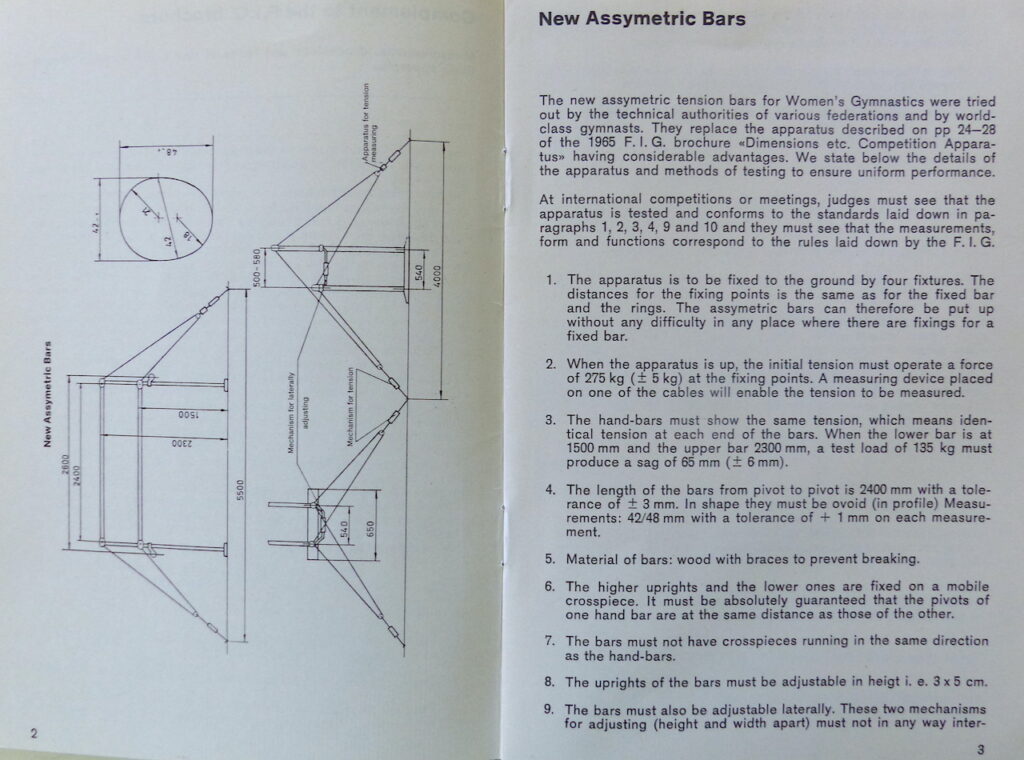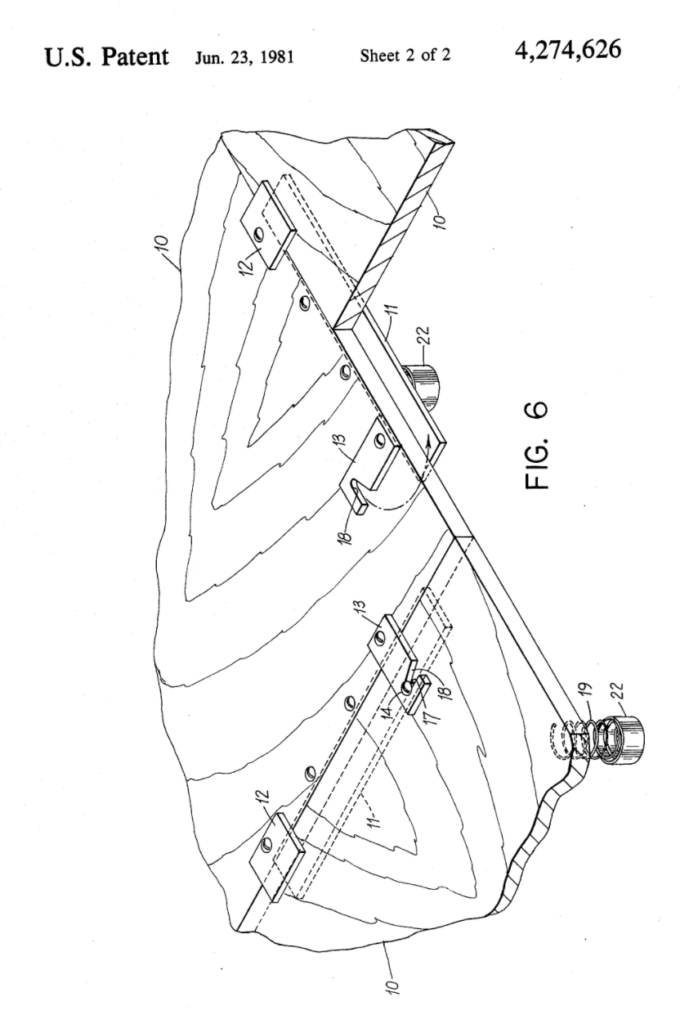Has the balance beam always been 10 cm wide? When did balance beams start having padding? When did the uneven bars start having tension cables? How far apart were the bars in 1989? Have the landing mats always been 20 cm thick?
The cheat sheet below gives you the basic contours of the ever-changing apparatus norms.

A Few Facts
- Since the 1936 Olympics, the low bar has always been 80 cm lower than the high bar.
- In 1936, the distance between the bars was roughly 51.3% of today’s distance.
- 1952 Olympics: The floor area was 12 x 12 m for the first time at a major FIG event.
- 1967 European Championships: The first time that uneven bars with cables were used in competition at a major FIG event.
- In 1967, the distance between the bars was roughly 54.9% of today’s distance.
- 1975 European Championships: The first time that a padded beam was used in competition at a major FIG event.
- Jahn’s concept of a balance beam from Deutsche Turnkunst in 1816 was a round tree trunk (see the PDF below).
- While beams eventually became flat, they still adhered to their wooden origins. In 1960, the beam was to be made of wood that restricted the risk of splintering.
- 1979 World Championships: Commonly believed to be the first time a spring floor with coiled springs was used at a major FIG event.
- Note: Even today, the Apparatus Norms booklets talk about elasticity on floor but do not specify the use of springs.
- 1997: The FIG approved the use of 20 cm mats for women’s artistic gymnastics. As a result, the height of the women’s apparatus changed. (20 cm mats had been the standard for men’s artistic gymnastics since 1989.)
- 2000: The Women’s Technical Committee printed the incorrect height of the vault in the Apparatus Norms. I believe this contributed to the vault debacle at the Sydney Olympics.
More on coiled springs: AMF was the equipment supplier for the 1979 World Championships. In April of 1979, they applied for a patent for a floor system that used coil springs, plywood, and a system of latches to connect the plywood sections. (The patent was reviewed and then granted in 1981.) Here is a diagram from the patent:

Prior, the FIG had used a Reuther double-flex floor. You can see images in the PDFs below.
Flying rings? Track and field events like throwing a javelin? To learn more about the evolution of the women’s program at FIG events, head over to this post.
Download Your Cheat Sheet
With no further ado, here’s a cheat sheet with apparatus dimensions and drawings over the years.
Appendix: Past Apparatus Norms Booklets
1961
1974
2006
2 replies on “The Evolution of the Apparatus Dimensions in Women’s Artistic Gymnastics”
Accepting that a spring floor with coiled springs was first used at a major FIG event during the 1979 World Championships, can anyone say roughly (even very roughly) when coiled springs became more of less the “norm”?
Hi, I was wondering if you help me. Do you know when bars changed from oval to round? And when fibre glass bars were introduced?
Thank you
Michelle